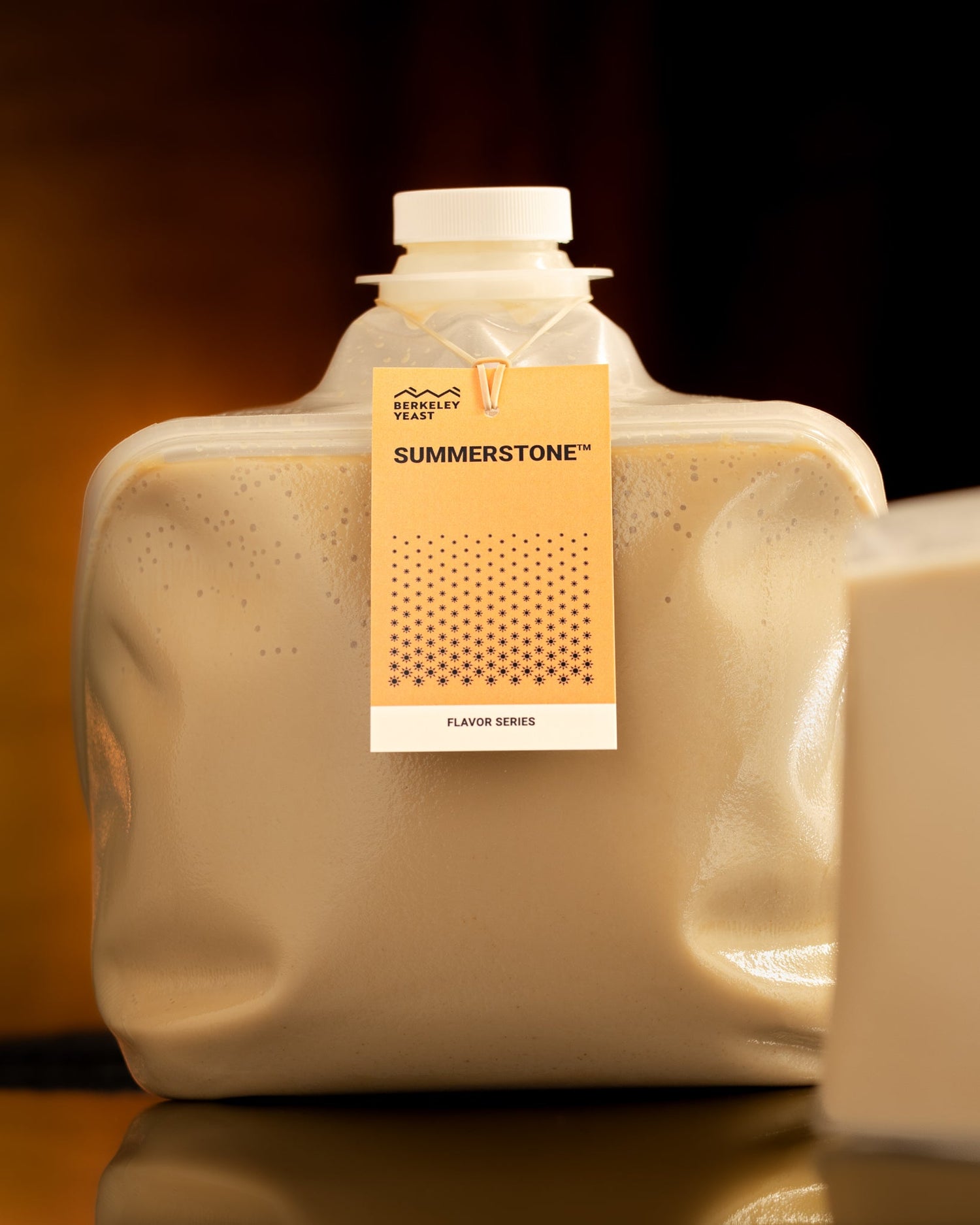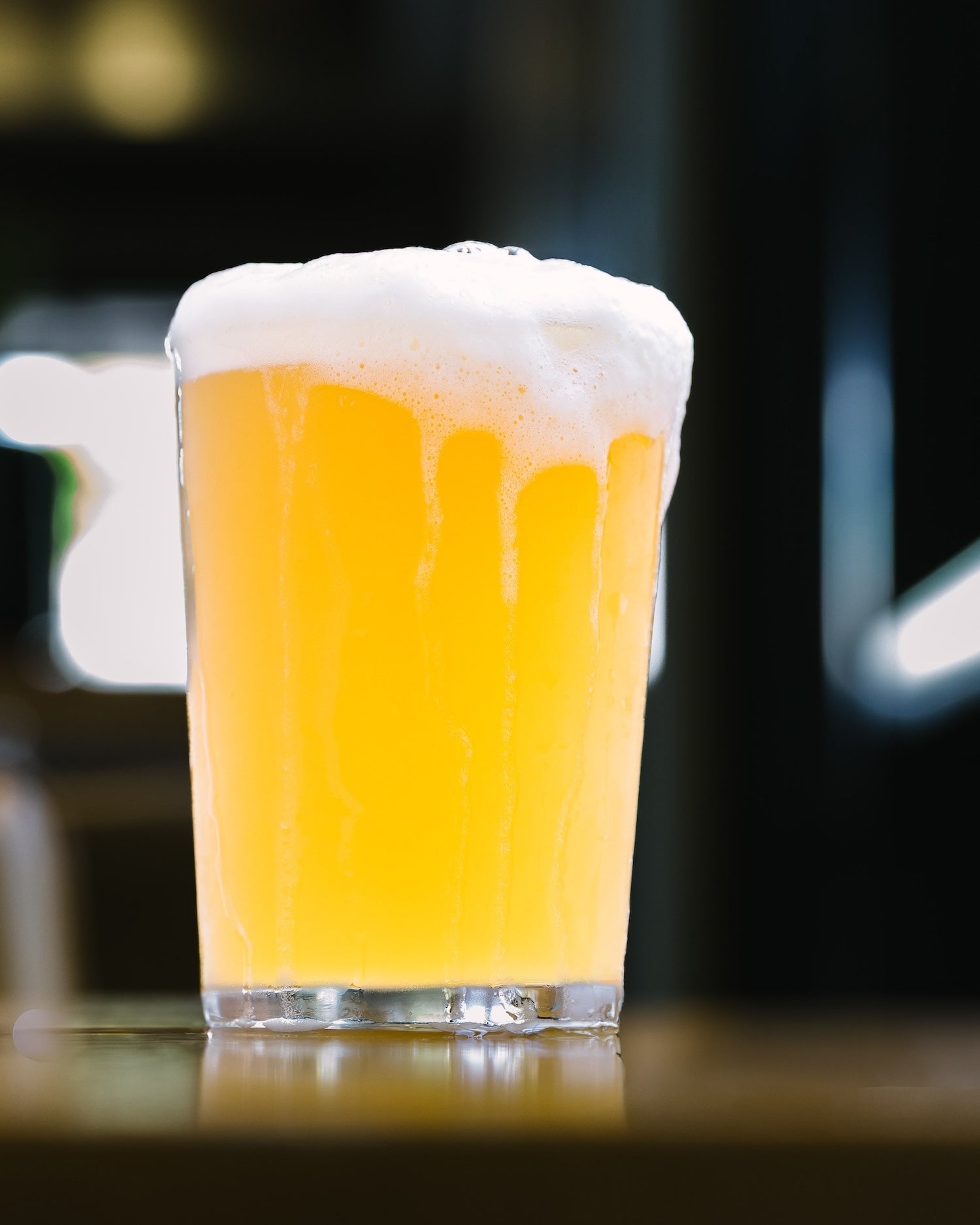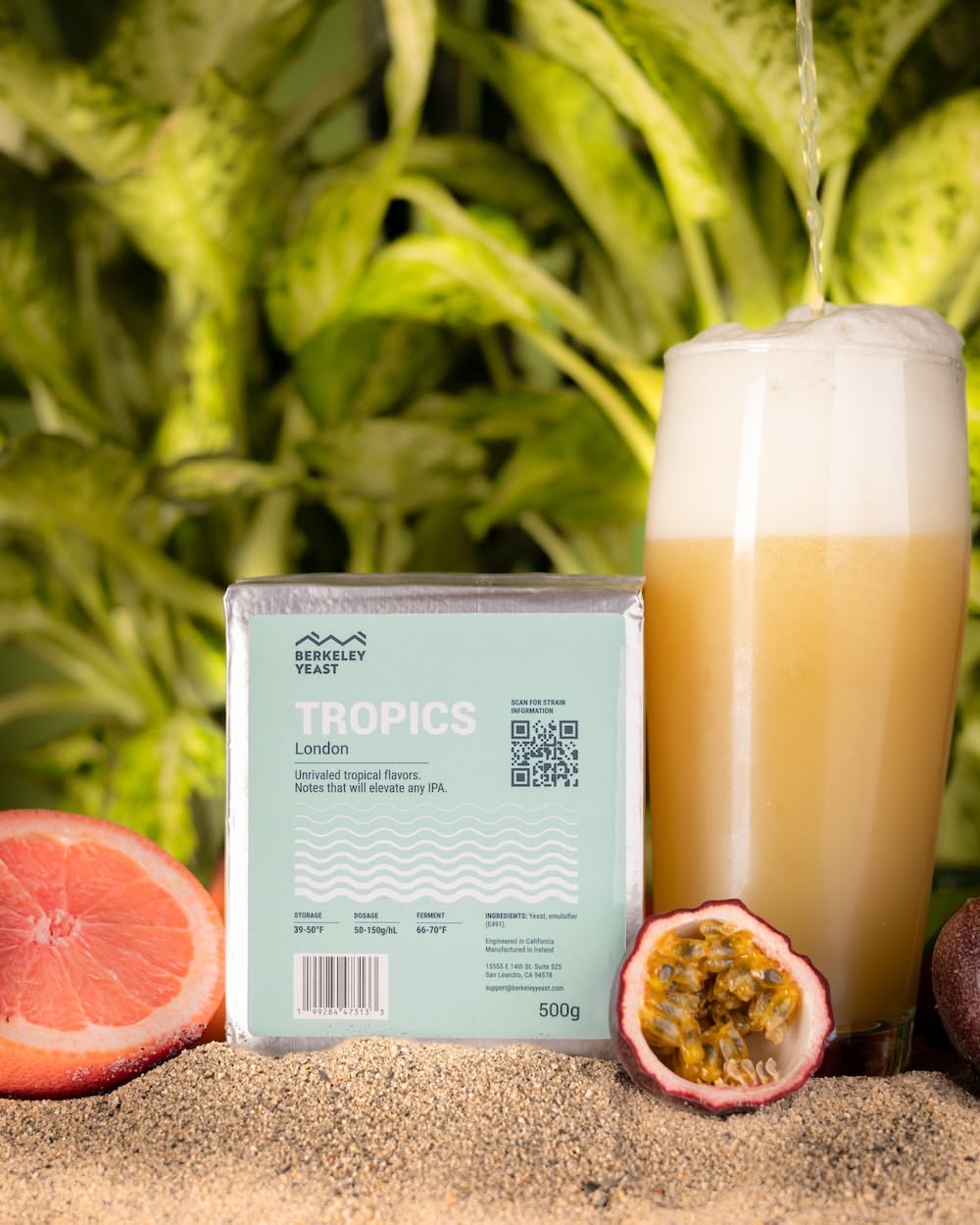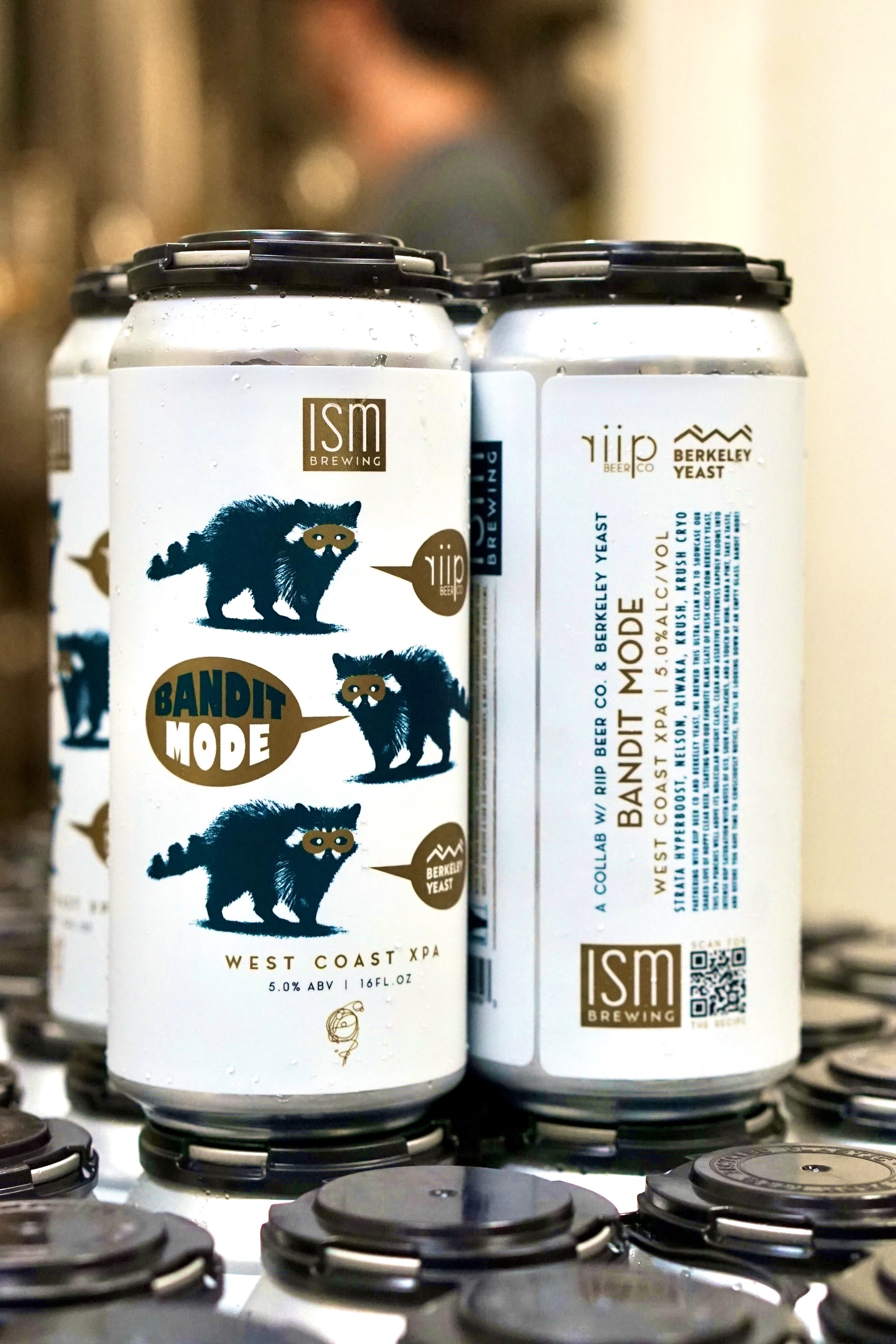About Summerstone
Summerstone provides complex and stable stone fruit flavor, especially reminiscent of peaches and apricots. Stone fruit character is notoriously difficult to retain in beer, even with large amounts of purée or other fruit preparations. Summerstone offers the most elegant solution for imparting and retaining that elusive stone fruit flavor.
Key Principle
Peach flavor is produced by Summerstone during aerobic growth. This flavor will not develop during anaerobic fermentation, so a specialized aerobic propagation step is required before knocking out the full batch volume.
Propagation & Knockout Process
1. Prepare the Propagation Wort
- Use standard wort composition (target OG as desired).
- Volume: Typically 1 BBL of propagation wort per 9 BBL of additional wort.
- Pitch rate: 750K cells/mL/°P
2. Set Up Aeration
Install a check valve and a 0.2 µm filter directly upstream of the aeration assembly.
- < 1 BBL: Use an airstone placed directly in the tank.
-
> 1 BBL or Scaling Up: Use a venturi inline oxygenation setup:
- Recirculate wort using a low-shear pump (e.g., diaphragm pump).
- Install the venturi inline to inject air.
3. Aeration Parameters
- Use compressed air, not pure oxygen. (O2 can be toxic to yeast in excess.)
- Duration: 36–72 hours of continuous aeration
-
Temperature: 66–68°F (19–20°C)
- Higher temps reduce peach expression
- Lower temps can stunt yeast growth
- No pulsing: Keep aeration steady throughout propagation
Monitoring Peach Development
- Begin pulling samples after 36 hours of propagation.
-
Blend with finished beer to evaluate flavor intensity.
- This helps determine your ideal blending ratio.
- 1 BBL prop : 9 BBL wort is a great starting point.
- Adjust as needed—these trials will help you find the sweet spot.
- Longer propagation = more peach flavor. Adjust accordingly.
Knockout
- Once propagation is complete, knock out the rest of the wort on top of the propagated starter.
- No additional yeast pitching is necessary—the propagated culture is sufficient.
Critical Notes
- Skipping prolonged aeration eliminates peach character, even with the same yeast.
- Think of aeration as a flavor switch: ON = peach; OFF = neutral.
- Yeast can be stored and repitched, but peach flavor only develops with the aerobic step.
Scaling Considerations
Some breweries dedicate a "flavor tank" (10–100 BBL) to develop high-intensity peach character, which can then be blended into multiple batches:
- Use a small amount in an IPA for subtle stone fruit nuance.
- Use up to 20% in a fruit-forward beer for a bold peach-forward profile.




